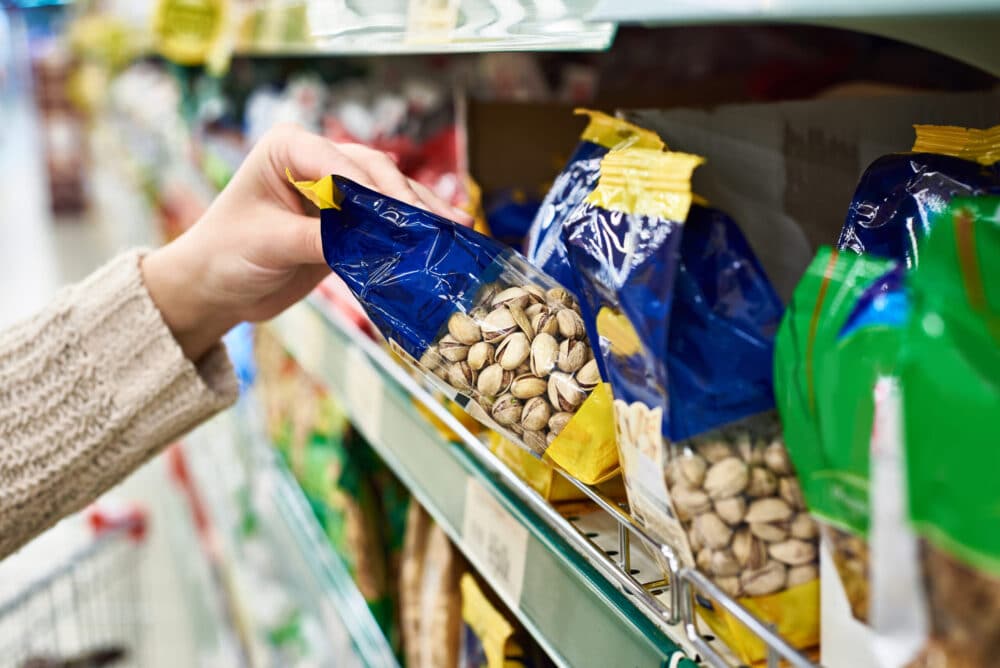Source: Link Testing Instruments Co., Ltd.
Entering the food area of the supermarket, a dazzling array of food comes into view. The packaging forms used are mainly divided into inflatable packaging, ordinary packaging, and vacuum packaging. Among them, inflatable packaging and vacuum packaging can prolong the shelf life of food. Inflatable packaging can also protect the shape of the packaged food to prevent it from being squeezed, deformed or broken. In the process of food storage or shelf life, the problem of bag expansion occurs from time to time, especially for vacuum packaging and ordinary packaging.

According to the analysis of the appearance of food packaging expansion bags (the gas inside the packaging increased significantly), the causes of this problem are mainly divided into two categories, one is that a large amount of gas in the external environment enters the inside of the packaging, and the other is that microorganisms in the packaging. More gas is produced due to growth and reproduction, and each type of reason is divided into the analysis of many detailed factors such as the airtightness, heat sealability, barrier property of the packaging and so on. Therefore, solving the problem of expansion in food packaging is a complicated process. For the problem of bag expansion caused by the entry of ambient gas, the gas content in the package is similar to that in the environment. For the problem of bag expansion caused by microbial reproduction, the content of carbon dioxide in the package will far exceed the content of carbon dioxide in the air (specifically Except carbon dioxide-filled modified atmosphere packaging). Therefore, the analysis process of this kind of problem can be greatly simplified by analyzing the content of gas components inside the expansion bag packaging.
Test method and test equipment
For the analysis of gas content in food packaging, there are currently no corresponding standards at home and abroad, and domestic related method standards are in the process of being formulated. The test equipment used in this paper is the LTDK-190 headspace gas analyzer independently developed and designed by Link Testing Instruments Co., Ltd.
LTDK-190 Headspace Gas Analyzer adopts professional structural design and is equipped with high-precision sensors, which can accurately and conveniently measure the O2 content in hollow packaging containers such as sealed bags, bottles, cans, etc. test. It is suitable for quickly and accurately evaluating the content and ratio of O2 and CO2 in the gas in production lines, warehouses, laboratories, etc., so as to guide production.
Test principle: The equipment can be configured with two gas sensors, which are used to test oxygen and carbon dioxide respectively. During the test, the sampling needle is inserted into the packaging sample, the gas in the sample is pumped into the sensor by the vacuum pump, the sensor outputs the current and voltage signals of the concentration of O2 and CO2 (optional) in the gas in the sample in real time, and the instrument obtains the current output from the sensor The voltage signal calculates the content of O2 and CO2 (optional) in the gas. After reaching the end condition of the experiment, the test stops, and the instrument records the concentration of O2 and CO2 (optional) in the gas to be tested in the sample.
Test sample and test process
Test sample: The test sample for this test is a finished package of a certain brand of pickled vegetables that has a bag expansion problem.
Experimental procedure:
(1) Turn on the equipment and set the test parameters such as sampling time and analysis time.
(2) Paste a sealing gasket in the middle of the sample to be tested, pass the sampling needle of the equipment through the sealing gasket, and insert it into the inside of the sample package. Note that the sampling needle should not touch the pickled vegetables packaged inside the sample.
(3) Press the test button to start the test. The gas inside the sample enters the device along the sampling needle and passes through the gas detector for gas content analysis.
(4) After the test is over, the device automatically displays the content values of oxygen and carbon dioxide in the tested sample.
Test Results and Analysis
In this test, 3 bags of samples were selected from the bulging bags of pickled vegetables for analysis. The average oxygen content in the 3 bags was 5.24%, and the average carbon dioxide content was 64.31%. As can be seen from the test results, the content of carbon dioxide in the expansion pickled vegetables packaging is relatively high, so the reproduction of microorganisms is the main reason for the expansion bags of pickled vegetables.
Bulging bag problem is one of the quality problems often encountered by food companies, and this kind of problem usually occurs during the shelf life of the product. Therefore, once the bag expansion problem occurs, it will have a great impact on the brand image of the company. In this paper, the LTDK-190 headspace gas analyzer is used as the detection equipment to test the gas component content in the package of a certain brand of inflatable pickles. Accurate and reliable, it can be well used in the analysis of bag expansion problems, thus simplifying the problem-solving process.
For more details please visit our website www.linktesting.org